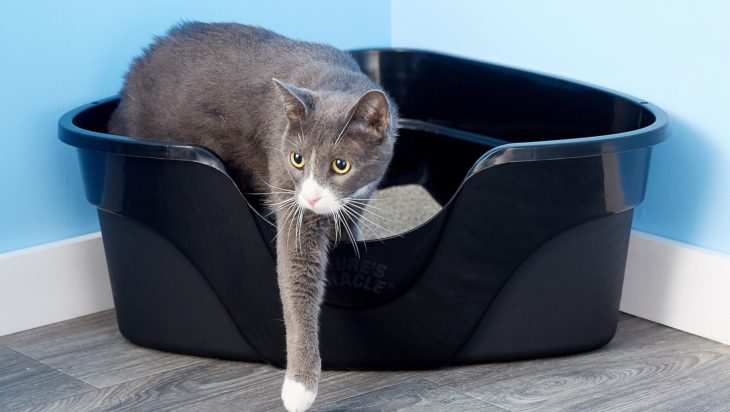Sometimes, looking for the right cat can be reminiscent of preparing for your garden-variety arranged marriage. The amount of research and sifting through every driving-distance shelter or cat breeder can take so much time that your boss begins to notice.
99% of cat owners say “they just knew” their forever kitty when they held them for the first time. But destiny, luck, and love at first sight aside, some adopted cats have been through not-so-nice circumstances before they ended up in a healthy, happy home.
Most cats will love you with all of their kitty hearts but won’t show it by urinating in the proper place – at least not at first. You will need to filter through behavioral therapist advice, cat litter box reviews (we recommend some great ones here, by the way: https://petsho.com/clever-cat-litter-box-reviews-top-entry-litter-box/), best cat toys, diet advice – a sort of a “What to Expect When You’re Expecting”, but for cat owners.
The reason that research is so important, is because a lot of cats that end up in shelters are traumatized for some reason or another. It’s best to learn about any behavior that may arise ahead of time instead of being surprised by it. Anticipation is best – for you and for the cat.
Troublesome behavior is not the cat’s fault, but often the effect of previous trauma, bad experiences or maybe even bad training. For example, the cat that a veterinarian friend of ours adopted a year ago was successfully cured of inappropriate urination problems with the right type of loving guidance, but he was never able to get over his panicked response to hearing a blastic bag rustle.
Here are the three most common trouble behaviors that can be experienced by new parents of post-shelter cats:
Litter Box Trouble

Source: currentc
This is an annoying problem that can drive many owners to insanity. Sometimes, cats don’t want to use their litterbox. Cats often end up in shelters because of this problem. The most common solution to this is to make the box as cat-friendly as possible. Didn’t know your litter box was cat-unfriendly? Maybe your cat sees it as an enemy, and you don’t have a clue why? Some helpful tips:
- Start cleaning the litterbox as often as you can. Some cat owners forget to do this. Even if it “looks good” to us, remember that your cat is a clean animal with a keen sense of smell, and no vanilla lavender scent is going to make him want to go into a litterbox that hasn’t been properly washed in weeks.
- Once a week, remove all the litter and scrub the litterbox. Put in fresh litter.
- The litter might be too deep – cat’s don’t like sinking into their litter, and about two inches will do just fine.
- Get a bigger litterbox – maybe your cat just can’t fit and turn comfortably
- Get rid of the cover – while we like to do our business in a closed, private place, it makes most cats uncomfortable.
- Change the type of litter you use. Some cats might find problems with a certain texture or smell and steer clear.
- Give them some privacy. If something scares or startles your cat while using the litterbox, she might be hesitant to go back
- Outside anxiety – did you move, have a baby or change your routine? If your cat is sensitive a little change in your daily lifestyle may affect her enough to change her habits too
- UTI – she might have a problem with a urinary tract infection
- Relocate the litterbox to a quiet part of the house
Inappropriate scratching

Source: rover
Scratching is a normal thing for cats. Even if it’s your favorite chair, couch or a brand new roll of toilet paper. You can’t control the urge – what you can control is where they do it. Or, at least, you can try to guide them. Declawing is inhumane and not a solution to a scratching problem.
- Provide a large variety of scratching posts for your cat. For a lot of cats, simply having a cardboard scratcher will make them not interested in anything else
- Sprinkle scratch posts with catnip so they will be more interested
- Learn how to clip your cat’s claws. (But please – this is different from declawing!)
- Use a spray bottle on your kitty if you caught him in the act
- You can discourage this behavior by covering scratchable objects or removing them from your cat’s view.
- Find a CAAB or ACAAB (Certified Applied Animal Behaviorist) if you feel like the situation has become better of you
- Hold off on throwing away old scratching posts, as cats tend to prefer them and they seem familiar to them
Aggression

Source: animalfriends
Aggressive cats can cause a lot of damage not to mention fear. Sometimes, a cat will be aggressive towards their cat parents, and sometimes only to outsiders. If you notice that your friends have stopped visiting and prefer to stay on the sidewalk when they come to see you, try following this advice:
- Learn how to read your cat’s body language and respond appropriately. There are two types of aggressive postures: the defensively aggressive, and offensively aggressive.
- An aggressive cat will make themselves look bigger and more “scary” – their tail will puff up, their hair will stand on end and they’ll look straight at you.
- An offensively aggressive cat will make themselves look small and look like they’re cowering.
- Never touch a cat displaying those symptoms. It’s just not a good time.
- Evaluate their behavior – are they sick or hurt? This is a very real possibility and should always be taken into account.
- Work with a behaviorist – if simply feeling out the situation is not an option – ask a professional for help.
- Develop a plan with a behaviorist – this is a serious issue, and no article can truly help you if your cat is aggressive enough to be a problem to live with.
- Idiopathic behavior – some cats are plain dangerous. Cats that experience this type of behavior can stay aroused and ready to fight for a long time. This can’t be explained by vets or behaviorists, but you must work with them in order to develop a good course of action.
- If you can’t deal with violent behavior, don’t beat yourself up – it’s not your fault and you’re trying your best.
Making your cat happy

Source: fetchpetcare
Most of all, cats who come with “baggage” need a lot of patience from their parents. They need time to trust you. Remember that very often you are repairing the damage done by someone else, and you need to reassure your new cat friend that you are there for them. Once you earn their trust, you can work on a friendship that will last a lifetime.
